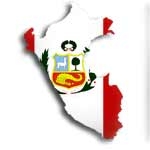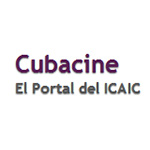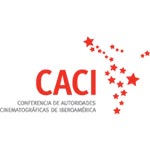 “Nuestro objetivo final es nada menos que lograr la integración del cine latinoamericano.
Así de simple, y así de desmesurado”.
“Nuestro objetivo final es nada menos que lograr la integración del cine latinoamericano.
Así de simple, y así de desmesurado”.
Gabriel García Márquez
Presidente (1927-2014)


-

Cine peruano en construcciónPor Oscar ContrerasNo es un dato menor que en cien años de cine el Perú haya producido un puñado de películas de una digna excelencia expresiva. Fueron el resultado de esfuerzos aislados, discontinuos y a contramano de las políticas públicas que oscilaron entre el proteccionismo y el neoliberalismo en su versión más radical. Un siglo de cine en el que los directores más talentosos trabajaron sin una tradición industrial a la que aferrarse, sin infraestructura técnica, sin incentivos económicos ni espacios de formación. Su espíritu aventurero los condujo por el camino correcto, sin otro sustento que el de su cinefilia, su experiencia y sus relaciones con los productores nacionales y extranjeros.
Durante ese período, las “invenciones” fueron esporádicas. La aparición de Amauta Films en 1937, de la mano de Manuel Trullén –ciudadano español radicado en Lima–, inauguró una primavera industrial en la historia del cine peruano: catorce películas en cuatro años, un récord que se vio frustrado por el estallido de la Segunda Guerra Mundial. Años más tarde, surgió la llamada Escuela del Cusco, que agrupaba a jóvenes fotógrafos como Luis Figueroa, Eulogio Nishiyama, Manuel y Víctor Chambi y César Villanueva. A través de películas tan afectadas y esteticistas como Qoyllur Ryti (1956), Kukuli (1961) y Jarawi (1966), estos directores miraban –no sin sofistificación– el mundo quechua, los paisajes y las costumbres regionales. En los años setenta, Robles Godoy (Nueva York, 1923), cultor de un estilo artístico autoral, En la selva no hay estrellas (1967), La muralla verde (1970), Espejismo (1973), entre otras, defendió desde sus primeros trabajos las pautas dictadas por cineastas como Alain Resnais y Michelangelo Antonioni, y por cierta estética europea de los años cincuenta.
Robles Godoy filmó películas en las que priorizó el despliegue de los recursos del lenguaje cinematográfico (la cámara, los lentes, los filtros, el sonido, el montaje) y no los personajes, el tema o la historia. En cualquier caso, esta rara avis marcó una diferencia sustancial con respecto al cine peruano anterior y al contemporáneo ya que representó el primer intento, enfáticamente declarado, de hacer un cine al servicio de la voluntad creativa y personal del autor. Así, desde el espíritu criollo y popular de Amauta Films –vehículo de la idiosincrasia urbana, de su humor, de su moral, sus calles y sus costumbres– hasta la filmografía de Armando Robles Godoy, el cine peruano dio un salto cualitativo sorprendente.
En los últimos veinte años hubo de todo: bueno, malo y horrible. Desde la explotación comercial más vulgar hasta autores muy comprometidos con la realidad del país que respetan los códigos del género con una indudable nobleza narrativa. Podría decirse también que las nuevas generaciones de directores y de espectadores han ido desarrollando un gusto cercano al “otro cine”, que puede incluir modelos como el del iraní Abbas Kiarostami, el tailandés Apichatpong Weerasethakul y el del argentino Lisandro Alonso, difundido en cofradías mayoritariamente universitarias.Las miradas del cambio
En la línea de renovación se destaca en la actualidad un grupo de directores con trayectorias disímiles y portadores de propuestas también diferenciadas, como Francisco Lombardi, Augusto Tamayo San Román, Josué Méndez, Aldo Salvini, Claudia Llosa y Gianfranco Quattrini.
Francisco Lombardi (Tacna, 1949), el más internacional de los directores peruanos, desarrolló en treinta años una obra coherente, premiada, comentada y criticada rabiosamente. A través de sus mejores películas –Los amigos (1978), La ciudad y los perros (1985), La boca del lobo (1988), Caídos del cielo (1990) y Bajo la piel (1996)– y de sus recientes adaptaciones literarias –No se lo digas a nadie (Jaime Bayly), Pantaleón y las visitadoras (Mario Vargas Llosa) y Tinta roja (Alberto Fuguet)–, Lombardi tiende a la descripción detallada. Es un cineasta dramaturgo y anti-festivo. Con una caligrafía austera y controlada, este director se aleja de la militancia, porque lo más importante para él es la moral, el temperamento y la ética de los personajes. Actualmente, Lombardi no parece tener continuadores. Quizá porque la mundialización del cine le ha demostrado a las nuevas generaciones de peruanos que se puede hacer películas renunciando a los anclajes y a los temas locales de siempre: el machismo, la homosexualidad, el militarismo, el encierro, la criminalidad, la miseria y todas las hierbas y fantasmas literarios que nutren vigorosamente el cine de este realizador.
En 2001, Augusto Tamayo San Román (Lima, 1953) presentó ante el mundo un largometraje en el que trabajó durante muchos años: El bien esquivo. Se trata de un film ambientado cuidadosamente en el Perú del siglo XVII, durante el Virreinato español, que se ocupa de los orígenes históricos de la sociedad peruana. Sobre la base de un tratamiento audiovisual expresionista y caracterizaciones austeras, el director potencia el relato sobre el mestizaje, la pérdida de abolengo y las vocaciones artísticas secretas (o mejor dicho, acalladas) en una sociedad estamental que reprime el amor de los protagonistas, un militar mestizo y una monja de clausura. El bien esquivo es una de las grandes películas peruanas de todos los tiempos, y este año se estrenará otra película histórica de gran producción: Una sombra al frente.
Sin duda, otro hito del cine peruano actual es Días de Santiago (2004), la ópera prima de Josué Méndez, la mejor película de los últimos diez años. Premiada en una veintena de festivales internacionales, se trata de una narración hiperrealista y descarnada sobre las desventuras de un veterano de guerra –convertido en taxista– en la caótica ciudad de Lima. Pero también es un film de posguerra interna. Méndez captura la anomia social, el desorden familiar y las alteraciones mentales de Santiago –el personaje central–, y de esta manera se revela como un deudor del cineasta chino Wong Kar-wai, tanto de sus juegos cromáticos y de sus texturas granuladas como de su sonido muy elaborado. En un país de escasas oportunidades para los jóvenes, en donde se debe luchar diariamente sin poder apelar a las nociones de individuo, ciudadano o Estado y se deben tolerar los componentes racistas que gobiernan las relaciones humanas, una película como Días de Santiago es muy beneficiosa. A los 28 años, Josué Méndez es hoy un formador de opinión y prepara su próxima película, Dioses, con el apoyo del cineasta británico Stephen Frears.
En otra corriente, luego de su primer largometraje Bala perdida (2001), Aldo Salvini (Lima, 1964) ha dirigido un estupendo documental de personaje: El caudillo pardo (2005). Esta película trata sobre la desmesura y el exotismo, y en ella es posible descubrir la influencia de los documentalistas norteamericanos Albert y David Maysles y del fotógrafo y realizador Robert Frank. La trama se concentra en la vida de Jorge Pohorylec, un ciudadano peruano de ascendencia judía, de unos 60 años, promotor del nazismo en el Perú. Personaje contradictorio y diferente, este “camisa parda” sudamericano pronuncia discursos en las calles vacías de Lima, admira a Adolf Hitler, está a favor de la eugenesia y de la “importación de hembras pues son escasas”. Salvini aplica un blanco y negro expresionista, apenas unos tachos de luz y la ubicación necesaria de la cámara y el micrófono –capaces de capturar el gesto y la palabra justos–, apostando todo a lo que no es actual.
Otra propuesta sugerente es la de Claudia Llosa (Lima, 1982). Sin ninguna experiencia previa en cine, esta publicista profesional que reside en Barcelona ha obtenido numerosos premios internacionales por su ópera prima Madeinusa (2006). Cuando esta película se estrenó en el Perú, generó un legítimo debate a raíz de la apropiación de la cultura andina y su deformación. Sorprende el contexto serrano de la película, en el que Dios muere el Viernes Santo y no ve a sus criaturas durante tres días hasta el Domingo de resurrección. En esos tres días los hombres y las mujeres del pueblo de Manayaycuna, liberados del control severo de Dios, estallan en un gran carnaval pagano.
Finalmente, otro realizador nuevo y esencial es el peruano-argentino Gianfranco Quattrini. Su ópera prima Chicha tu madre, estrenada en 2006, fue una grata sorpresa y fue considerado el mejor filme peruano de ese año. Chicha tu madre narra las andanzas de Julio César, un endeudado taxista que aprende a leer el Tarot y que se ha distanciado de su esposa, de su hija adolescente embarazada y de su club de fútbol de segunda división que ya no lo admite por sus desdichas. El filme de Quattrini es y no costumbrista porque contradice cualquier forma de complacencia colorida, farandulera o procaz. Rehuye los tópicos lastimeros y la reflexión ampulosa. Aborda el paisaje y la cultura de Lima sin reservas, captando con tono amistoso (en medio del caos, la estafa, el sub-fútbol, la prostitución y la prepotencia) los sentimientos más profundos de sus habitantes que, al final del filme, se prolongarán lejos de su ciudad, a una Buenos Aires que nunca veremos.
A partir de este panorama, podemos observar que el cine peruano actual está en constante transformación, sujeto a avances y retrocesos, en un proceso de cambio en el que no resulta fácil imaginar horizontes muy claros. Los principales beneficiados de este proceso serán los directores y el público en general. A los críticos sólo nos corresponde documentarlo, asumiendo una postura responsable, racional y articulada. Es absolutamente necesario. Peruvian Film in progress
Peruvian Film in progress
By Oscar Contreras
It is not a simple information that in one hundred years the Peruvian film has produced a handful of films in a worthy expressive excellence. They were the result of isolated and discontinuous efforts and against the trends of the public policies that oscillated between the protectionism and the neoliberalism in their more radical version. This has been a century of film in which the most talented filmmakers worked without an industrial tradition to follow and technical infrastructure, economic incentives and neither training spaces. Their adventurous spirit led them to the right way, with the only support that that of their love for the cinema, their own experiences and their relationships with the national and foreigner producers.
During that period, the "inventions" were sporadic. the appearance of Amauta FIlms in 1937, guided by Manuel Trullén - an Spanish citizenship settled in Lima- opened an industrial spring in the Peruvian film history : fourteen films in four years, a record that was frustrated by the outbreak of the Second World War. Years later, emerged the so called Cusco School (Escuela del Cusco) which grouped young photographers as Luís Figueroa, Eulogio Nishiyama, Manuel and Victor Chambi and César Villanueva. Through so affected and aesthetician films as Qoyllur Ryti (1956), Kukuli (1961) and Jarawi (1966), these directors looked at - no without sophistication the Quechua world, the landscapes and the regional customs. In 1970s, Robles Godoy (New York 1923), exponent of an artistic auteur style, directed En la selva no hay estrellas (1967), La muralla verde (1970), Espejismo (1973), among other, it defended since his first works the examples dictated by filmmakers as Alain Resnais and Michelangelo Antonioni, and certain European aesthetics of the 1950s.
Robles Godoy made films in which prioritized the deployment of the film language resources (the camera, the lens, the filters, the sound, the montage) and not the characters, the theme or the story. In Anyway, this strange specimen marked a substantial difference with regard to the previous Peruvian cinema and to the current one, since it offers the first attempt, emphatically declared, to make a film to the service of the author's creative and personal will. So, from the Creole and popular spirit of Amauta Films – a vehicle of the urban idiosyncrasy, of its humor, morals, streets and customs- to Armando Robles Godoy´s film, the Peruvian film made a surprisingly qualitative jump.
In the last twenty years, there was everything in the Peruvian film: good, bad and horrible things. From the most vulgar commercial exploitation to authors very committed with the country reality, who respect the codes of the genre with certain narrative nobility. It could also be said that the new filmmakers and spectators generations have progressively developed a pleasure close to the "other cinema” which could include models as that of the Iranian Abbas Kiarostami, the Thai Apichatpong Weerasethakul or the Argentine Lisandro Alonso, diffused mainly in guilds of university students.
The looks of the change
In the renovation trend stands out a group of filmmakers with dissimilar trajectories and with different proposals, as Francisco Lombardi, Augusto Tamayo San Román, Josué Méndez, Aldo Salvini, Claudia Llosa and Gianfranco Quattrini.
Francisco Lombardi (Tacna 1949), the most international of the Peruvian filmmakers, developed in thirty years a coherent, award-winning, commented work and furiously criticized. Through his best films.- Los amigos (1978), La ciudad y los perros (1985), La boca del lobo (1988), Caídos del cielo (1990) and Bajo la piel (1996) - and his most recent literary adaptations - No se lo digas a nadie (Jaime Bayly), Pantaleón y las visitadoras (Mario Vargas Llosa) and Tinta roja (Alberto Fuguet)–, Lombardi tends to the detailed description. He is a playwright filmmaker and an anti-festive one. With an austere and controlled calligraphy, this film director takes a distance from the militancy, because for him the most important thing is the moral, the temperament and the ethics of the characters. At the moment, it seems that Lombardi does not have continuators. Maybe because the film globalization has demonstrated to the new Peruvian generations that it is possible to make films without recurring to the compulsion and the same local theme: machismo, homosexuality, militarism, confinement, criminality, misery and all the grass and literary ghosts that vigorously nurture Lombardi’s films.
In 2001, Augusto Tamayo San Román (Lima 1953) showed to the world a feature film in which he worked during many years: El bien esquivo. It is a film carefully set the 17th century Peru, during the Spanish Viceroyalty, dealing with the historical origins of the Peruvian society. Based on an audiovisual expressionist aesthetic and austere characterizations, the director develops the story about the miscegenation, the loss of ancestry and the artistic secret vocations (or rather, silenced) in a stratified society that represses the love of the main characters, a mixed race military and a cloistered nun. El bien esquivo is one of the greatest Peruvian films of all times, and this year, another historical film of great production, Una sombra al frente, will be released.
Without doubt, another landmark of the current Peruvian film is Días de Santiago (2004), the first work by Josué Méndez, the best Peruvian film of the last ten year. Awarded at about 20 international film festivals, it is a hyperrealist and stark narration about the misfortunes of a war veteran - who becomes a taxi driver- in the chaotic city of Lima. But it is also a film of internal post-war period. Josué Méndez captures the social anomaly, the family disorder and also the Santiago's mental alterations - the main character- and in this way Josué reveals himself as debtor of the Chinese film director Wong Kar-wai, both of his chromatic games and granulated textures as of his much elaborated sound. In a country of scarce opportunities for the youths, where you should fight daily without being able to appeal to the notions of individual, citizen or state and it should tolerated the racist components that govern the human relationships, a film as Días de Santiago is very beneficial. To the 28 years of age, Josué Méndez is today a creator of opinions and prepares his next film, Dioses, with the support of the British filmmaker Stephen Frears.
Following another trend, after his first feature Bala perdida (2001), Aldo Salvini (Lima 1964) directed a stupendous documentary about figures: El caudillo pardo (2005). This is a film about the lack of moderation and the exoticism, and it is possible to find in it the influence of the North American documentary filmmakers Albert and David Maysles and the photographer and filmmaker Robert Frank. The plot focuses on Jorge Pohorylec's life, a Peruvian citizen of Jewish origin, about 60 years old, and a promoter of the nazism in Peru. He is a contradictory and singular character, this South American “dun shirt” pronounces speeches in the empty streets of Lima, he admires Adolf Hitler and is in favor of the eugenics and also the "import of women because they are scarce." Salvini applies an expressionist black and white, hardly some light and the necessary location of the camera and the microphone – able to capture the right expression and word, betting for every thing that is no current.
Another suggestive proposal is that of Claudia Llosa (Lima 1982). Without any previous film experience, this professional publicist who lives in Barcelona has received numerous international awards for her first work Madeinusa (2006). When this film was released in Peru, it generated a legitimate discussion as a result of its appropriation of the Andean culture and its deformation. It is surprising the mountain context of the film, in which God dies on Good Friday and he does not watch his creatures for three days until Easter Sunday. During those three days the men and women of Manayaycuna town, free from the severe control of God explode in a great pagan carnival.
Finally, another new and essential filmmaker is the Peruvian-Argentinean Gianfranco Quattrini. His first work Chicha tu madre was a pleasing surprise, it was released in 2006 and considered the best Peruvian film of that year. Chicha tu madre narrates Julio Cesar's adventures, who is an indebted taxi driver who learns how to read the Tarot and has distanced himself from his wife, her adolescent pregnant daughter and f his second division soccer club that no longer admits him for his misfortunes. Quattrini´s film is and is not folkloric because it contradicts any form of colorful indulgence, socialite or lewd. He avoids the pitiful theme and the pompous reflection. He approaches the Lima landscape and culture without reservations, capturing with friendly tone (in the middle of the chaos, the swindle, the sub-soccer, the prostitution and the prepotency) the deepest feelings of its inhabitants that, at the end of the film, will be prolonged far from their city, toward a Buenos Aires that we will never see.
Starting from this panorama, we can observe that the current Peruvian film is in constant transformation, subject to advances and setbacks, in a process of change that it is not easy to imagine very clear horizons. The main beneficiaries of this process will be the filmmakers and the public in general. To the critics only correspond to document it, assuming a responsible, rational and articulate position. It is absolutely necessary.
(Fuente: revistatodavia.com.ar)
















